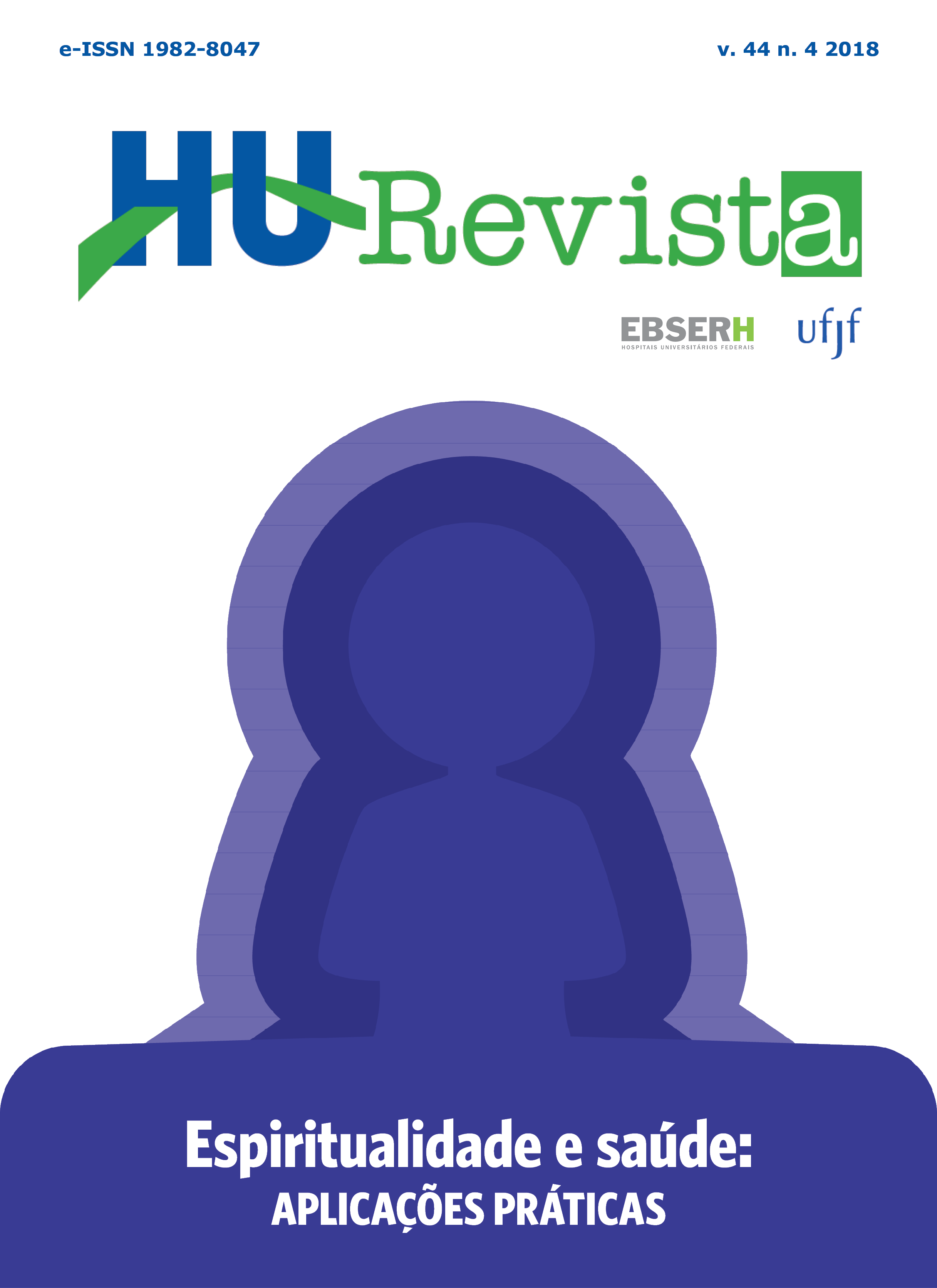Relações entre espiritualidade / religiosidade e Psiquiatria no Brasil
Bases teóricas
DOI:
https://doi.org/10.34019/1982-8047.2018.v44.28189Palabras clave:
espiritualidade/religiosidade, psiquiatria brasileira, relações, históricoResumen
As relações entre espiritualidade/religiosidade e Psiquiatria no Brasil passaram por momentos distintos. Os relatos estão fragmentados e distribuídos em diversas fontes. Em uma revisão narrativa esse artigo tem por objetivo oferecer uma visão geral dos protagonistas e principais fatos de cada etapa, desde o século XIX até os dias atuais. A nomeação de Juliano Moreira, em 1903, para a direção do Hospital Nacional dos Alienados (Rio de Janeiro/RJ) é o marco inicial da Psiquiatria cientifica brasileira. O pano de fundo é a visão Positivista do mundo e do ser humano, com a expectativa de que a ciência suplantaria todas as crenças religiosas e metafísicas. Foi preciso que o vigor da Modernidade esmaecesse para que outro entendimento aflorasse. Nas últimas décadas do século XX psiquiatras receptivos ao tema das crenças conseguiram abrir espaços em associações profissionais para debater sobre espiritualidade e somente a partir da década de 1990 as pesquisas nacionais em Psiquiatria começaram a incluir a espiritualidade. Desde então, o conjunto de evidências cresceu célere, mas consistentemente. Em nível mundial – e em menos de três décadas - o Brasil já está entre os cinco países com maior número de publicações sobre espiritualidade/religiosidade e saúde mental, com potencial para permanecer em posição de destaque, pois possui população com grande religiosidade, ao mesmo tempo em que surge uma nova geração de pesquisadores engajados no tema.
Descargas
Citas
2. Oda AMGR, Dalgalarrondo P. Juliano Moreira: um psiquiatra negro frente ao racismo científico. Revista Brasileira de Psiquiatria. 2000: 22(4), 178-9.
3. Carvalhal LA. Loucura e Sociedade: o pensamento de Juliano Moreira (1903-1930) [monografia de bacharelado em História]. Rio de Janeiro: Universidade Federal do Rio de Janeiro; 1997.
4. Passos A. Juliano Moreira (vida e obra). Rio de Janeiro: Livraria São José; 1975.
5. Gabriel Figueiredo As origens da assistência psiquiátrica no Brasil: o papel das Santas Casas. Rev. Bras. Psiquiatr. vol.22 n.3 São Paulo Sept. 2000.
6. Coelho RS. Primeira unidade psiquiátrica em hospital-geral no Brasil. Revista do Instituto Histórico e Geográfico de São João del-Rei, p. 4-9, 1973.
7. Gonçalves AM, Goulart MSB. História das Santas Casas na Assistência à Saúde Mental mineira no século XIX. Tempos Gerais - Revista de Ciências Sociais e História – UFSJ, Número #2 – 2015, pp. 04-26.
8. Piccinini WJ. História da Psiquiatria. Psychiatry On-line Brazil, 2004: 9 (2).
9. Ribeiro B. Protestantismo e cultura brasileira. São Paulo: Casa Editora Presbiteriana, 1981.
10. Câmara FP. Pré-história da psicoterapia brasileira: a chegada do magnetismo animal no Brasil, 1823-1887. Debates em Psiquiatria, 3(3), 2013, 34-38.
11. https://espiritismonomundo.wordpress.com/hospitais-psiquiatricos-espiritas-no-mundo/ Consulta em 21.08.2019.
12. Noronha M. Terapia social. Florianópolis: Letras Contemporâneas, 2007, 200p.
13. www.cppc.org.br / Consulta em 03.09.2019.
14. Lotufo Neto, F. Psiquiatria e Religião: a prevalência de transtornos mentais entre ministros religiosos. Revista de Psiquiatria Clínica, São Paulo, v. 23/24, n.4/1-3, p. 32-33, 1996.
15. Dalgalarrondo P, Gattaz WF. A psychiatric unit in a general hospital in Brazil: predictors of length of stay. Social psychiatry and psychiatric epidemiology, v. 27, n. 3, 1992. p. 147-150.
16. Dantas CR, Pavarin LB, Dalgalarrondo P. Sintomas de conteúdo religioso em pacientes psiquiátricos. Revista Brasileira de Psiquiatria, v. 21, n. 3, 1999.
17. Dalgalarrondo P. Religião, psicopatologia e saúde mental. Porto Alegre: Artmed, 2009.
18. Elias ACA. (2003). Re-significação da dor simbólica da morte: relaxamento mental, imagens mentais e espiritualidade. Psicologia: Ciência e Profissão, v. 23, n. 1, p. 92-97.
19. Elias ACA, Giglio JS, Pimenta CAM, El-Dash LG. (2007). Programa de treinamento sobre a intervenção terapêutica “relaxamento, imagens mentais e espiritualidade” (RIME) para re-significar a dor espiritual de pacientes terminais, Revista de Psiquiatria Clínica, v. 34, n. 1, p. 60-72
20. Dias ALM, Silva TO. (2015) Saúde mental, Religião e espiritualidade na trajetória acadêmica de três psiquiatras brasileiros (1968-1999). Revista Maracanan n.13, Dezembro 2015, p. 34-49.
21. Lucchetti G, Lucchetti AL. (2014). Spirituality, religion, and health: over the last 15 years of field research (1999-2013). Int J Psychiatry Med ;48(3):199-215. doi: 10.2190/PM.48.3.e. Review. PMID: 25492714
22. Moreira-Almeida A, Oliveira E Oliveira FHA. (2017). A brief panorama of Brazil's contributions to psychiatry. Int Rev Psychiatry. Jun;29(3):206-207. doi: 10.1080/09540261.2017.1285537. PMID:28587548
23. Moreira-Almeida A. (2019). Currículo Lattes. Disponível em: <http://buscatextual.cnpq.br/buscatextual/visualizacv.do?id=K4795639P9>. Acesso em 14/09/2019.
24. WHOQOL Group. (1994). The development of the World Health Organization quality of life assessment instrument (the WHOQOL). In: Orley, J. & Kuyken, W. (Eds.) Quality of life assessment: international perspectives. Springer Verlag, Heidelberg, pp.41-60.
25. WHOQOL SRPB Group. (2005). A cross-cultural study of spirituality, religion, and personal beliefs as components of quality of life. Social Science and Medicine 62(6):1486-1497.
26. Goudzwaard B. Capitalismo e Progresso: um diagnóstico da sociedade ocidental. Viçosa, MG: Ed. Ultimato, 2019.
Archivos adicionales
Publicado
Cómo citar
Número
Sección
Licencia
Cessão de Primeira Publicação à HU Revista
Os autores mantém todos os direitos autorais sobre a publicação, sem restrições, e concedem à HU Revista o direito de primeira publicação, com o trabalho licenciado sob a Licença Creative Commons Attribution que permite o compartilhamento irrestrito do trabalho, com reconhecimento da autoria e crédito pela citação de publicação inicial nesta revista, referenciando inclusive seu DOI.









